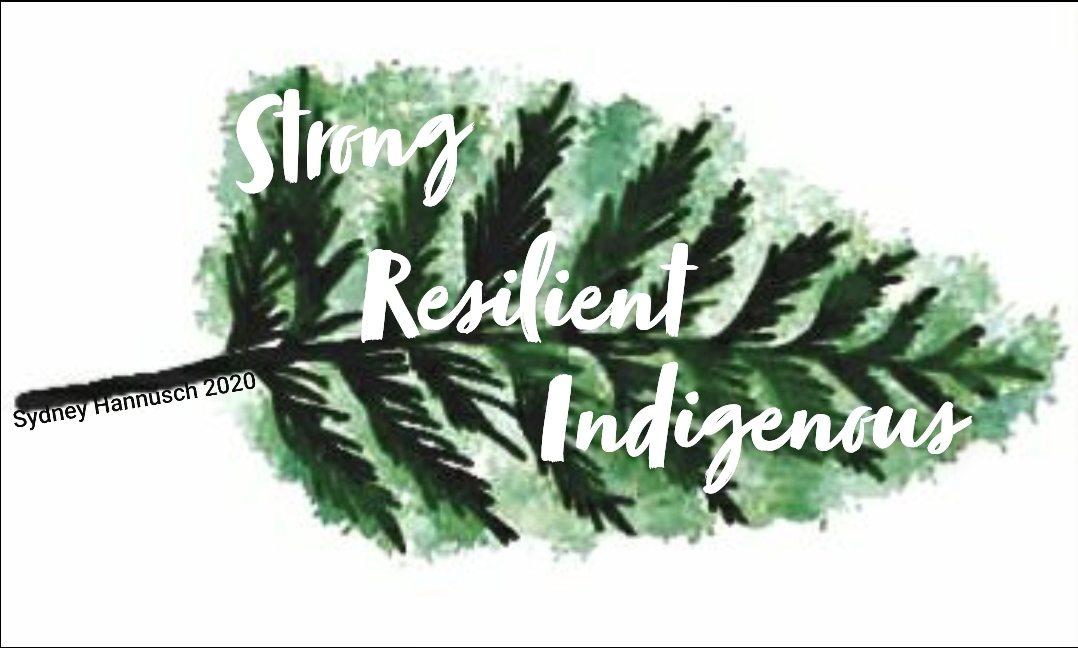As Women’s History Month continues through the month of March, I find myself noticing the lack of Indigenous representation in the media (outside of Indigenous run media). So I have taken it upon myself to write an extremely small list of historic Indigenous women and Two-Spirit people who have done/have been doing incredibly amazing work and deserve to be recognized.
Disclaimer: It’s important to note that the use of the term “Indian” is used as it is the direct language used by the Canadian government in its legislation. Non-Indigenous people should not refer to Indigenous people as “Indians” as it is offensive and racist. It is correct to either use Indigenous, Native, First Nations, Métis, Inuit, or you know…just calling someone by their name.
Ozaawindib (Ojibwe, Two-Spirit: Makandwewininiwag [the Pillager band of Ojibwe])
Ozaawindib is a Two-Spirit Ojibwe woman who lived on Gaa-Miskwaawaakokaag near Leech Lake in 1800.
Much of Ozaawindib’s life was written and recorded through the lens of white colonizers who engaged with her community. As colonization and forced assimilation grew with the occupation of settlers, gender roles and identities that the colonizers brought with them were forced into Indigenous communities. By the late 1700s and into the early 1800s, life for Two-Spirit and Trans Native people became harder, especially with the occupying government’s creation and implementation of its Indian policy in the late 19th century.
Ozaawindib was seen as a heroic guide to settlers who wrote about her, but many of her stories leave out her gender identity. Many non-Native writers have also taken it upon themselves to write and publish a false narrative about Ozaawindib, claiming she was “just a male who cross-dressed, and was more tied to being homosexual than Two-Spirit” as a way to delegitimize Two-Spirit identities and queerness being openly accepted and normalized in Indigenous communities. Another non-Native writer even went as far as to claim Ozaawindib wasn’t Native, saying she was a Swedish man. These false publications are just one example of Indigenous stories being distorted to fit non-Native agendas.
Ozaawindib and her life are important to many Ojibwe people — she was a fighter, hunter, designated Chief, and a proud Ojibwe woman. Two-Spirit, Trans, and Queer Indigenous stories are often erased from the mainstream, so the work being done by Indigenous scholars to fit the pieces of her life back together is a beautiful example of Indigenous resistance.
Mary Two-Axe Early (Mohawk: Kahnawake, Quebec)
Mary Two-Axe Early was a Mohawk woman from the Kahnawake reserve in Quebec who was at the forefront of Indigenous women’s rights. Colonization was going strong and has not stopped since, with colonizers bringing their ideas of gendered roles from European society and forcing them onto Indigenous communities.
These colonial aspects and patriarchal views were not left out when colonizers created the Indian Act in 1876. Section 12 (1)(b) stated that “an Indian woman who married a non-Indian man (whether Aboriginal or non-status) would lose her status.” Mary Two-Axe Early pursued this colonial law for the women who had lost their status due to marrying non-status or non-Native men. She established the “Equal Rights for Indian Women” which eventually changed to “Indian Rights for Indian Women.”
Mary Two-Axe Early worked and fought for all Indigenous women from the 1960s until 1985 when Bill C-31 was created. Mary Two-Axe Early was the first of many Indigenous women who regained her status in the eyes of the Canadian government. She was awarded the Governor General’s Award, an Honourary Doctorate of Law from York University, and a National Aboriginal Achievement Award for her work towards Bill C-31 and her work for the rights of all Indigenous women.
Christine Welsh (Métis: Red River, Manitoba)
Christine Welsh is a Métis filmmaker born in Regina, Saskatchewan. Her father’s ancestors were Buffalo hunters travelling West with the Red River Métis Resistance, and her mother’s ancestors were Eastern European immigrants who settled in the prairies around the early 1900s.
Welsh graduated from the University of Regina with a B.A. She has been writing and producing films since 1991, with her first job as an assistant editor in 1977 for the film “Who Has Seen the Wind”.
One of her most well-known titles is “Finding Dawn” (2006), which looked further into the Missing and Murdered Indigenous Women (MMIW) epidemic. It won a Gold Audience Award at the Amnesty International Film Festival in 2006.
In part with film making, Christine is also a public speaker and a published academic. Welsh was also an associate professor at the University of Victoria, where she taught Indigenous Women’s Studies and Indigenous Cinema until she retired in 2017.
Irene Avaalaaqiaq Tiktaalaaq (Inuit: Qamani’tuaq [Baker Lake], Nunavut)
Irene Avaalaaqiaq Tiktaalaaq is a celebrated Inuit artist born near Baker Lake on the North shore of Tebesjuak Lake. She was raised by her grandparents and grew up living off the land, learning traditional Inuit teachings, and keeping her culture strong.
In the 1960s Irene began creating small soapstone sculptures and illustrations, which eventually led her to work in printmaking at a local printmaking studio, working onappliqué and embroidery. Her work is inspired by traditional oral stories and legends that her grandmother told her growing up.
Avaalaaqiaq Tiktaalaaq’s work has multiple solo exhibits in Toronto, Baltimore, and Guelph. She received an honourary Doctor of Laws from the University of Guelph, and has been a huge role model to young artists from her community. Avaalaaqiaq Tiktaalaaq created art that has helped preserve her culture and inspired countless future Inuit artists.
Angela Sidney (Tagish: Carcross/Tagish First Nation)
Angela Sidney is a Tagish author and storyteller from Carcross, Yukon born in 1902. Her mother was Tlingit and her father was Tagish. She spent her childhood listening to her mother’s stories. She married young at the age of 14, and as an adult, she worked to keep her culture alive for the next generations.
She also worked with anthropologists so that the Tagish language could be correctly recorded so that it can live on for future generations, due to the genocide, forced assimilation, and ongoing colonization of Indigenous people across the world. Angela worked her whole life to keep her people strongly and proudly connected to their culture.
Sidney worked her whole life to keep her people strong and proudly connected to their culture. She helped co-found the Yukon International Storytelling Festival, helped co-write traditional Tagish stories, and helped document Tagish Place Names for locations in southern Yukon.
Angela Sidney passed away in 1991, but to this day she is remembered for her work in preserving the Tagish culture and traditions.
Angie Crerar (Métis: Fort Resolution, Northwest Territories)
Angie Crerar was born in Fort Resolution, Northwest Territories living off the land with her family. She learned traditional life skills from her mother and father, who taught her to be a proud Métis woman.
Like many Indigenous children, Crerar was taken from her family at the hands of the Canadian government and put into the Indian Residential School at Fort Resolution. Indigenous children here were taught to hate their culture and their identity.
When Crerar graduated at age 17, she left with a conflicting sense of self after spending her youth fighting against these colonial institutions. Once she became a mother she moved to Grande Prairie to be close to her sisters, who helped her on her journey to reconnect with and love her culture once more.
Angie Crerar has been a prominent figure in the Métis Nation, helping to establish the Grande Prairie Regional College and other support programs for Indigenous communities in Grande Prairie. Her accomplishments have been recognized with many awards, and she is recognized as a strong Métis Elder and survivor.
https://www.metisnation.ca/wp-content/uploads/2011/10/Biography-Angie-Crerar.pdf
Jewelle Gomez (Cape Verdan/ Ioway/ Wampanoag: Boston, Massachusetts)
Jewelle Gomez is a Black Indigenous woman from Boston, Massachusetts. Her mother was African-American and her father was Ioway. She won a full scholarship to Boston Northeastern University for a bachelor’s degree, eventually gaining a master’s degree from Columbia for journalism.
Jewelle Gomez worked to eventually have job titles such as author, poet, critic, and playwright under her belt. She has worked in public television, theatre, and philanthropy. Her work centred around the experiences of LGBTQ women of colour, and her catalogue of work is extensive.
Jewelle Gomez has also done a lot of activism work for LGBT rights surrounding the history of race in America. Gomez has been a speaker at many universities across America and has fought against the state of California for the right to legal marriage for her and her partner. Still going strong, Jewelle Gomez is currently a playwright in residence at the New Conservatory Theatre Centre.
http://www.jewellegomez.com/bio.html
Kenojuak Ashevak (Inuit: Ikirisaq)
Kenojuak Ashevak is a prominent Inuit artist, and you’ve likely seen her beautiful artwork without even knowing.
Kenojuak was born on south Baffin Island at a camp known as Ikirisaq, travelling back and forth between Baffin and Arctic Quebec. She grew up with her family, who traditionally hunted and lived off the land.
In 1952 Kenojuak was diagnosed with tuberculosis and was moved to a hospital in Quebec City where she met Harold Pfeiffer, who taught patients ways to pass the time and make money through the arts. When she returned home in 1955, she was encouraged to continue in the arts and taught Inuit printmaking techniques.
Her most famous piece – “The Enchanted Owl” (1960) – was featured on a Canadian post stamp. Ashevak was also the first woman to be involved in a printmaking shop in Cape Dorset after it was newly built. She was skilled in carving and designing blankets, and travelled around the world as an ambassador for Inuit art.
Kenojuak received multiple awards for her work, including the prestigious Lifetime Achievement award at The National Aboriginal Achievement Awards Ceremony in 1996 and honourary degrees from Queens University and the University of Toronto. As a gifted artist and proud Inuk woman, Kenojuak Ashevak passed away in 2013, but lives on through her beautiful artwork, family, and long successful career.
http://www.dorsetfinearts.com/kenojuak-askhevak
Chrystos (Menominee, Two-Spirit: San Francisco, California )
Chrystos is a Menominee Two-Spirit Lesbian activist and writer born off-reserve in San Francisco, California. Their mother is a Euro-immigrant and their father is Menominee. As a writer Chrystos speaks on the topics of social justice, political issues, diversity, themes surrounding feminism. Chrystos’ activism works to free multiple Indigenous people who have been wrongfully imprisoned. Their activism has focused on issues around stolen land, abortion, violence, hunger, drugs, Palestinian rights, and domestic abuse, with the focus being primarily on helping Indigenous communities.
As an Indigenous writer, Chrystos writes on the effects of colonialism in class, gender, the prison systems, white supremacy, as well as the lengthy history ofpresent-day genocide and erasure of Indigenous people. Much of their early life was filled with hardships, as an adult Chrystos uses their writing as a way to speak on these topics. Chrystos’ work is written for Indigenous audiences but has also used their platform to create awareness and boost the voices and stories of Indigenous people.
https://www.makingqueerhistory.com/articles/2017/11/11/chrystos
Nora Bernard (Mi’Kmaq: Millbrook, Nova Scotia)
Nora Bernard is a Mi’Kmaq activist born in the Mi’Kmaq First Nation community of Millbrook, Nova Scotia. As a child Nora was forced through the Indian Residential School system, when her mother was threatened by the Canadian government with having her children taken away into “protective custody” when she refused to send her daughter.
Out of Nora’s mother’s control and honest consent, Nora spent five years in the Shubenacadie Indian Residential School. In 1995 Nora Bernard filed a lawsuit against Shubenacdie with other survivors demanding justice and compensation for child labour, incarceration, sexual and physcial abuse, and the acts of genocide Indigenous children faced at the hands of the church and state.
Once the lawsuit was filed multiple survivors from other schools began to file their own lawsuits. This ultimately created the rippling effect that would become the National Class Action Settlement, the largest in Canadian history. This class action settlement would compensate more than 79,000 survivors, winning justice for tens of thousands when it was settled in 2005. Nora passed away in 2007, but her legacy and activism lives on.
http://jfklaw.ca/international-womens-day-2019-nora-bernard/
Thelma Chalifoux (Métis: St. Albert, Lac Ste. Anne)
Thelma Chalifoux is a Métis activist and senator who was born in Calgary, Alberta. Her Métis ancestry connected back to early Métis communities in St. Albert and Lac St. Anne.
Thelma’s early life was often difficult as she was born right before the Great Depression. Her youth would bring her opportunities to help others in need. During the second World War she volunteered in multiple soup kitchens and eventually joined the military reserve force.
After her divorce, Thelma sought out help from social services to support her family. This was in 1958 when, once again, Indigenous families were being ripped apart by the Canadian government – a period known as the Sixties Scoop. Thelma had her four children taken away from her, and worked tirelessly at two jobs while finishing school to eventually regain custody in 1965.
This is where Thelma’s drive for activism began. She began working with Indigenous communities, families, and children. Her work in the Canadian Senate focused on the recognition of First Nations, Métis and Inuit people as separate and distinct Nations, as well as bringing forward issues that affected Métis communities.
Chalifoux was the first Métis woman appointed to the University of Alberta Senate, the National Métis Senate, and the Senate Constitution Commission. She also worked on committees regarding human rights, fisheries, environmental legislation, Métis housing, and the relationship between drug companies and the federal government. Her work in the Senate was to educate as well as to bring issues forward, especially one that affected Métis communities. She worked to preserve the Cree language by having it taught in Northern schools.
Chalifoux left a legacy of fighting for women’s and Indigenous rights, as well as running a safe house for those seeking shelter from domestic violence and helping women overcome drug addictions.
https://thecanadianencyclopedia.ca/en/article/thelma-chalifoux
As March is coming to an end, so ends Women’s History Month, but that doesn’t mean that we stop recognizing the achievements of women. It is indeed possible to celebrate women outside of a single month, we should know, men receive it 365 days a year. It is also possible for the media to be intersectional when speaking on historical women; to recognize the extensive accomplishments and work done by Indigenous women and Two-Spirit people across Turtle Island. I implore readers to research and read up on those outside of this limited list of groundbreaking Indigenous people, there are so many amazing stories that have yet to be given the spotlight and truly deserve it.
Miigwech.
































